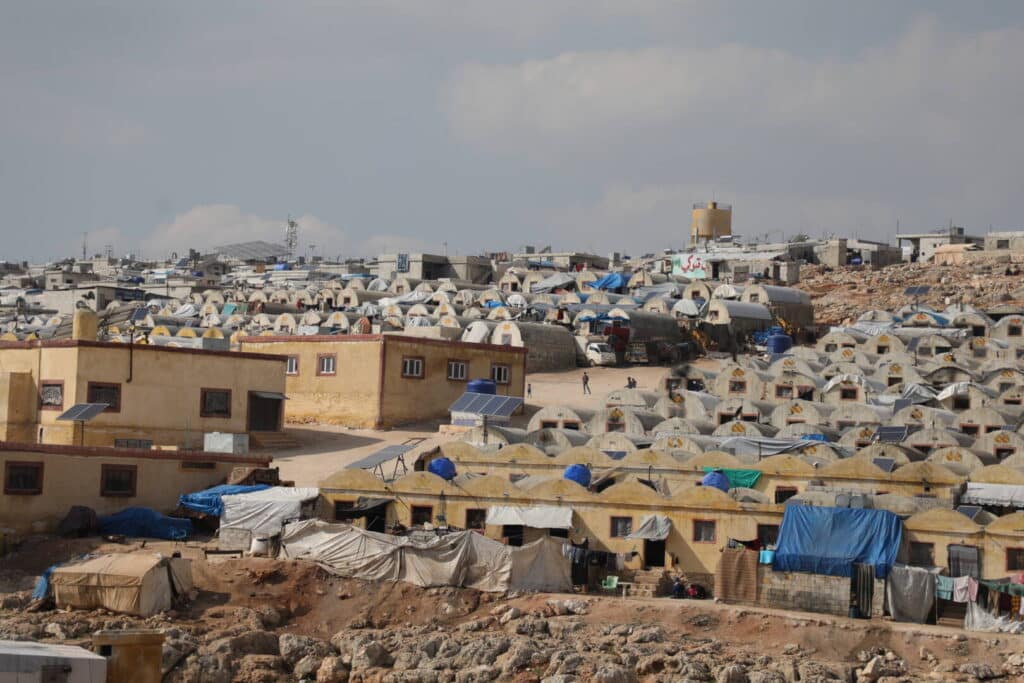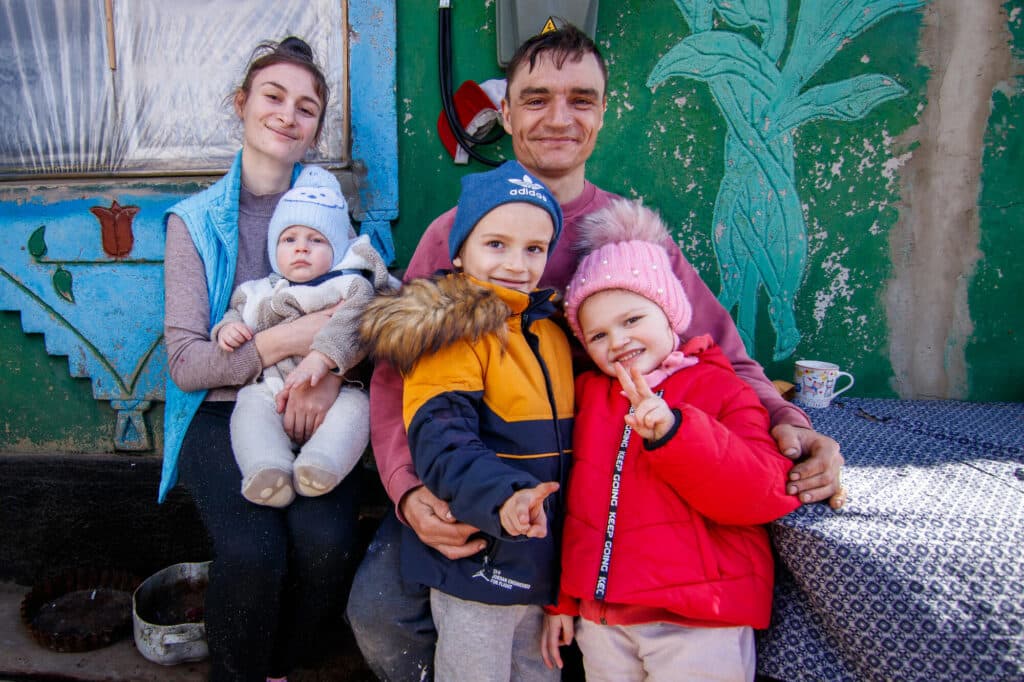Home. The word is defined as the place where one lives, but it also carries an emotional undertone. To many, home means security and history, a place where they belong. For millions of people around the globe, home no longer exists.
There are over 100 million displaced people in the world today from causes as varied as violent conflict, economic insecurity, and climate change. These numbers are sadly expected to grow, including from the recent war in Gaza, which has led to millions of people displaced from their homes. Over half of displaced people are women, and 41% are children.
Fortunately, our partners at World Vision are here to provide safe shelter, food, health care, education and psychosocial programming, emergency supplies, and more to displaced people across the globe. Below, World Vision shares an analysis of the top places that refugees were forced to flee in 2022 and how their staff have been able to help.
Read on to learn more about how World Vision is responding to the largest displacement crises today. Then, make a donation to World Vision through your workplace giving campaign. Your gift will help refugee families from crises like these with life-saving essentials.
The following article was originally written by World Vision and published on their website. It is reposted and edited with permission from the organization. To view the article directly, click here.
An estimated 108.4 million people worldwide have been forced to flee their homes, according to a 2022 analysis from the U.N. Refugee Agency (UNHCR). This figure includes refugees, asylum-seekers, internally displaced people, and other individuals in need of international protection.
The war in Ukraine, which triggered Europe’s largest displacement crisis since World War II, has played a significant role in the rise. At the end of 2022, 52% of the world’s refugee population came from Syria, Ukraine, and Afghanistan.
The top countries of origin for refugees include:
1. Syria — 6.5 million refugees
The majority of Syrian refugees from the 12-year conflict remain in the Middle East. The crisis has forced 3.6 million to seek refuge in Turkey, which also hosts the largest number of refugees of any country in the world.
Syrian refugees are also in Lebanon, Jordan, and Iraq. Returnees face a daunting situation, including a lack of infrastructure and services and danger from continued violence.
About 6.8 million people are displaced in the war-torn country, and an estimated 15.3 million will require life-saving aid in 2023, according to the United Nations. Since the war began in 2011, World Vision has helped more than 7.5 million children in the region. The recent earthquake in Syria and Turkey has worsened the situation, affecting internally displaced Syrians as well as Syrian refugees who had been living in Turkey where the earthquake struck.

Our goal is to support a total of 1 million people affected by the earthquake in both countries, including 605,000 by September 2023.
2. Ukraine — 5.7 million refugees
The ongoing war in Ukraine has caused Europe’s largest forced displacement since World War II. As of June 2022, when the UNHCR released its annual report, nearly 6 million Ukrainians were internally displaced, in addition to approximately 5.7 million who had fled the country. The war in Ukraine has also triggered economic shocks and disruptions worldwide, contributing to the global hunger crisis and significantly affecting those living in poverty.The impact of this crisis is still affecting vulnerable communities around the world.
When the conflict escalated in February 2022, World Vision immediately supported refugees fleeing across the Romanian border with food and shelter, cash assistance, protection against trafficking, and other essentials. We’ve since engaged churches and other partners — in Ukraine, the surrounding region, and around the world — in our work supporting displaced families in Romania, Moldova, Georgia, and Ukraine, as well as the host communities that have welcomed them.
We’re continuing to scale our response in the region by working with our partner networks to support people in areas affected by the conflict. Our emergency response focused on providing food, safe shelter, hygiene, and child protection services for those fleeing conflict. Now, we’re shifting our focus to long-term support and adding psychosocial support and educational programs for children and families.
3. Afghanistan — 5.7 million refugees
About 5.7 million people from Afghanistan are refugees, representing one of the largest long-term refugee situations in the world — and that number increases when you add asylum-seekers applying for refugee status. Another 3.4 million Afghans are displaced within the country due to conflict.
Pakistan hosts over 1.3 million Afghans, including some second- or third-generation Afghan refugees who have never lived in their home country. Some have been forced to return home from neighboring countries, but increased violence and instability in Afghanistan since the 2021 transition of power have led to a new surge of asylum-seekers.

World Vision serves children and families in over 3,000 villages in the northwestern provinces of Badghis, Faryab, Ghor, and Herat. By partnering with local community leaders in Afghanistan, we’ve responded to crises and equipped these communities to create positive, sustainable change. In 2022, we reached over 1.3 million people through proven programs in food and nutrition assistance, healthcare, child protection, and access to clean water, sanitation, and hygiene.
4. Venezuela — 5.4 million refugees
Years of economic and political instability in Venezuela have forced millions of Venezuelans to leave since 2014. They’ve migrated to seek food, work, and a better life, most of them to nearby countries. Many Venezuelans on the move lack legal status and need international protection and aid, according to the UNHCR.
World Vision supports Venezuelan migrants through food and nutritional assistance, access to clean water, and critical health and education services in Bolivia, Brazil, Chile, Colombia, Ecuador, and Peru. In Venezuela, we’re working through partner organizations to empower families to improve their children’s lives. Since 2019, we have reached over 1.7 million people, including more than 742,800 children, with aid.
5. South Sudan — 2.2 million refugees
Ongoing conflict and natural disasters in South Sudan have caused one of the largest refugee crises in Africa. About 2 million people are displaced within the country, and an additional 2.2 million refugees have fled to the Democratic Republic of the Congo, Ethiopia, Kenya, Sudan, and Uganda.
In 2022, we served more than 2.3 million people, including 1.3 million children, with life-saving aid nationwide, including emergency food aid; health and nutrition support; access to clean water, improved sanitation, and hygiene behavior change support; and educational initiatives.
6. Myanmar – 1.2 million refugees
For many years, but especially since 2017, the Rohingya people have fled violence, persecution, and human rights violations in Myanmar’s Rakhine state. Today, around 918,000 stateless Rohingya refugees live in the world’s largest and most densely populated refugee camp, Kutupalong. About half are children.
World Vision works in 22 Rohingya refugee camps in Bangladesh, serving nearly 500,000 people with food, clean water, sanitation facilities, shelter, and other humanitarian aid.



